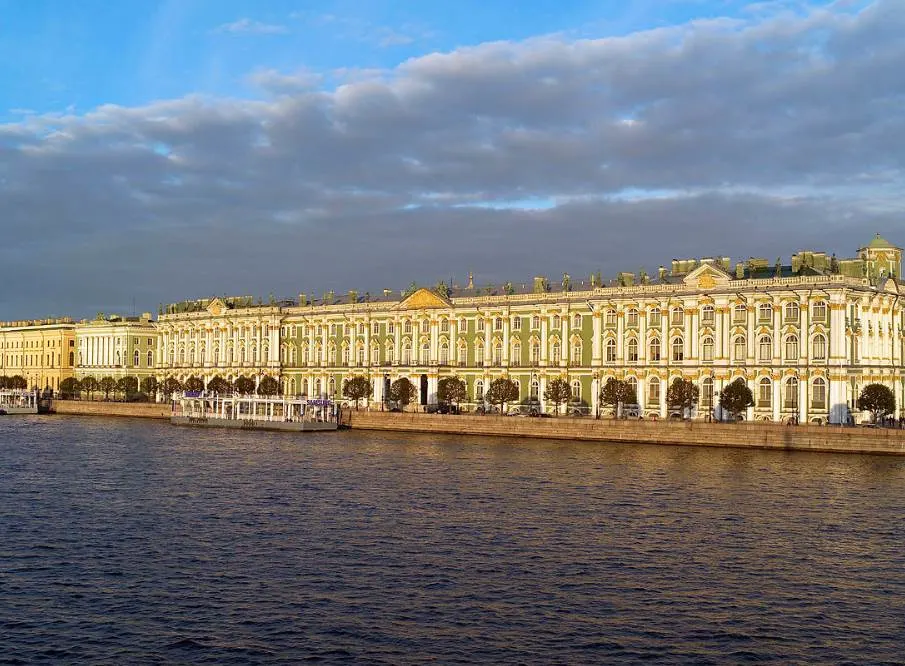It’s no surprise that a painting by this Dutch master has been referred to as one of the greatest paintings ever created.
Rembrandt van Rijn (1606-1669) was a Dutch Golden Age painter who also mastered drawing and etching during his prolific career.
He was extremely versatile and mastered a wide range of subjects, including portraits, historical paintings, religious artworks, and mythological paintings.
In this work, he depicted a popular parable of Jesus and did it with such an intensity of emotion that it defines his entire career.
In this article, you’ll discover some of the most interesting facts about The Return of the Prodigal Son, one of Rembrandt’s ultimate masterpieces.
1. It was one of the final paintings that Rembrandt ever worked on
Rembrandt Harmenszoon van Rijn was born in 1606, a time now referred to as the Dutch Golden Age.
Also known as the “Dutch Miracle,” this was a period in which the Dutch Republic was one of the most advanced nations in the world.
The art market boomed and many of the most renowned Dutch artists emerged around this time, including Rembrandt who started his career in his native Leiden.
After a successful period in his studio in his hometown, he moved to Amsterdam in 1631. This city was becoming the economic and cultural heart of the Dutch Republic in the early 17th century.

His career spanned many decades and he completed The Return of the Prodigal Son at the very end of it, probably around 1668.

2. It depicts a story from the Gospel of Luke in the New Testament
The Parable of the Prodigal Son is a story described in Luke 15:11-32 and is also known as the parable of the Two Brothers, Lost Son, Loving Father, or of the Forgiving Father.
It describes the story of the youngest son who couldn’t wait to get his inheritance from his old father and squandered all his money after he got it.
He returned from a faraway country after a spree of visits to brothels and endless parties. He was completely broke and in terrible condition.
Surprisingly, the aging father forgave his son and welcomed him with open arms, even though he spent his small fortune on trivial things.
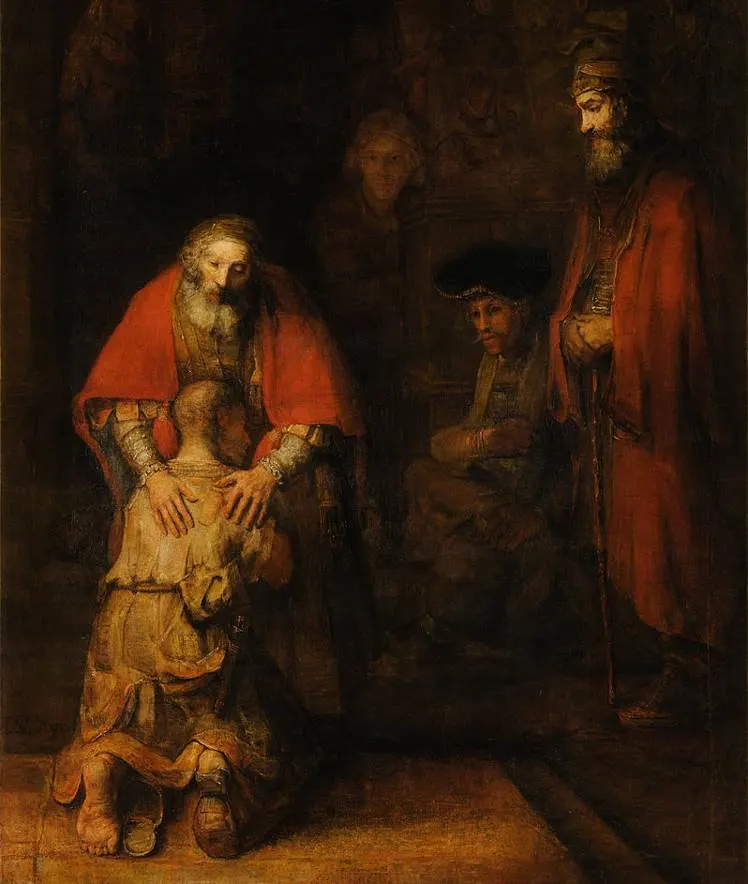
3. The old man is depicted in the role of both the father and the mother
One remarkable detail about how the father holds his kneeling son is that his hands aren’t the same.
His left hand is strong and masculine while his right hand appears to be delicate and feminine. It’s as if Rembrandt wanted to make a statement that the father takes on the role of both parents.
How the father holds the son is the epitome of the emotional power of the paintings of Rembrandt’s final phase.
It reminds me of the emotional touch of The Jewish Bride, a painting completed in the mid-1660s which features a similar bond between the two figures.
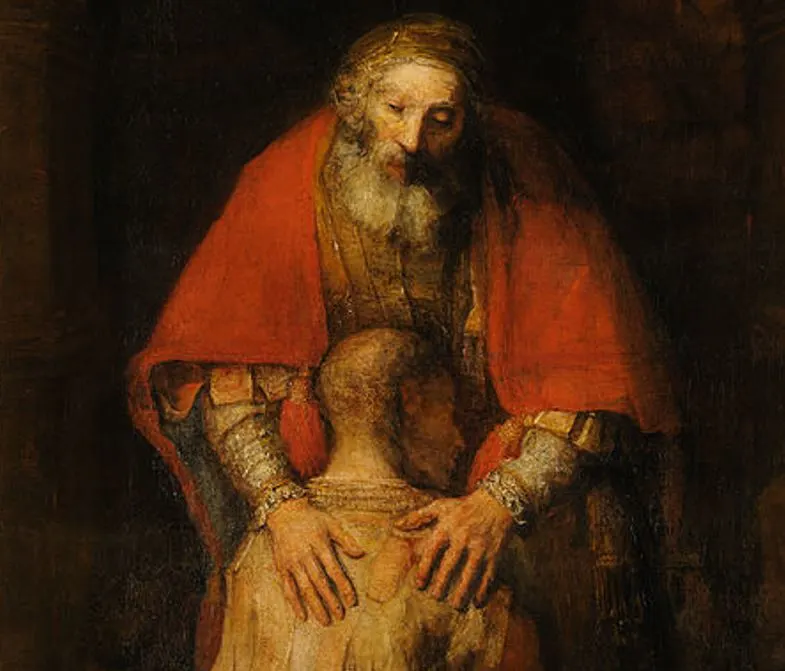
4. The prominent man on the right is the older brother
Not everybody was happy with the return of the long-lost younger brother. This especially applies to the older brother who remained home all this time.
He rushed to the scene to see his father welcoming his younger sibling with open arms. He looks on with his hands crossed, a sign of judgment.
He was especially angry about the fact that the father threw a big homecoming party for the youngest son, even though he had spent all of his father’s inheritance.
His response is rooted in Earthly morals such as law, merit, and reward. The father’s response resembles that of divine wisdom such as graciousness, forgiveness, and love.
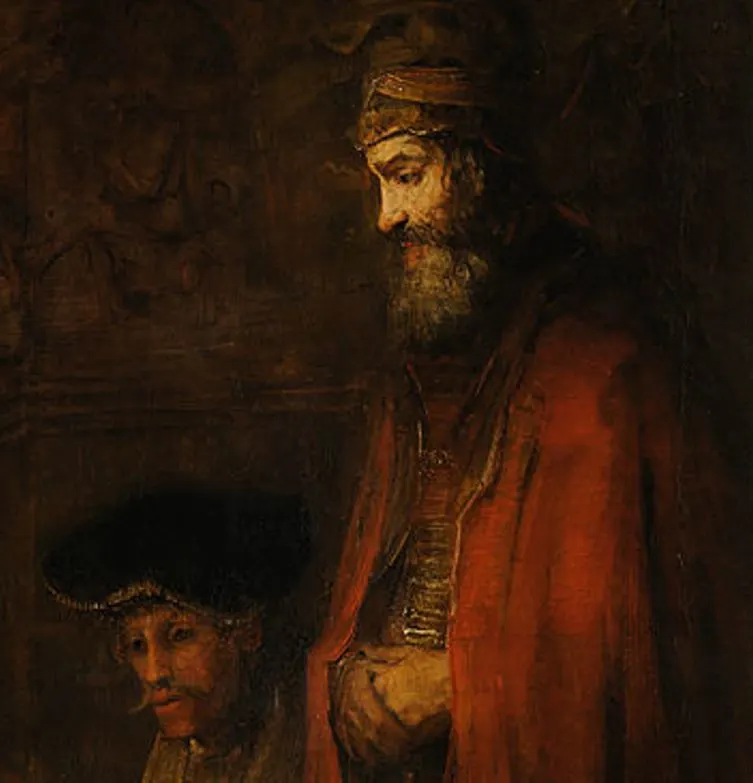
5. The identity of the other figures in the painting is still up for debate
The man directly next to the older brother might have been a tax collector who was there to collect the debt made by the youngest son.
Just like the other two figures in the painting, this hasn’t been confirmed and is merely speculation by art historians based on the expensive clothes he wears.
The other man looking at the scene might be a servant of the father and the woman in the top left corner, who is barely visible, could be the mother.

6. It wasn’t the only time that Rembrandt produced a work inspired by this story
Rembrandt held a lifelong fascination for the story of the Return of the Prodigal Son. That’s emphasized by the fact that he already produced artwork over 3 decades earlier.
These are also produced in the 3 mediums that he mastered, etching, painting, and drawing. His first work that was based on this story was an etching produced in 1636.
This etching was inspired by a similar woodcut by Martin van Heemskerck (1498-1574).
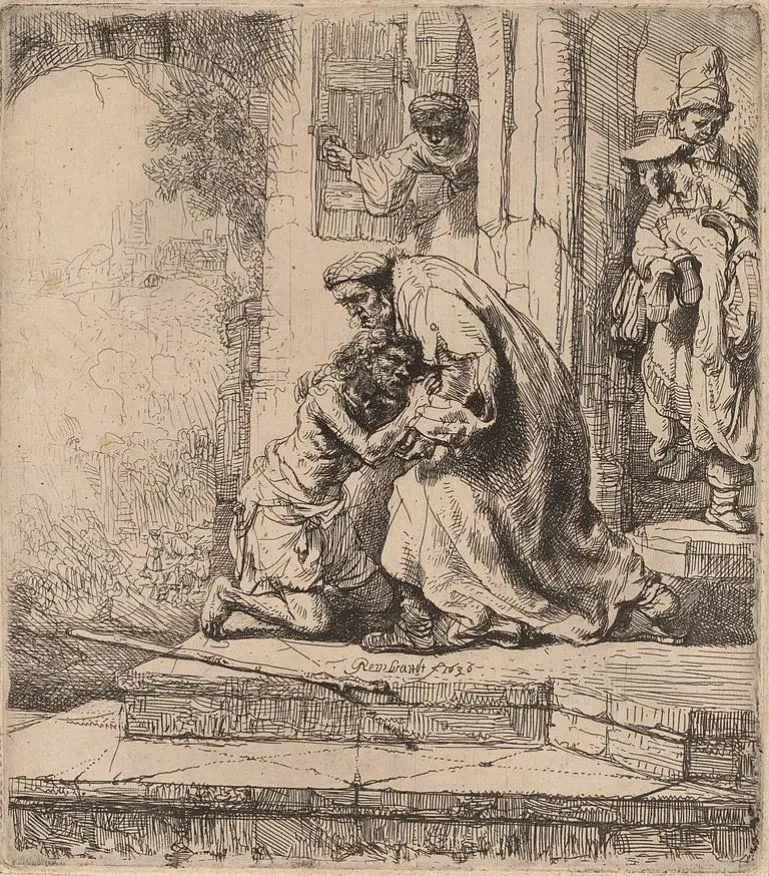
The second was a painting that depicts the youngest son while he was living the good life using his father’s inheritance.
This painting is titled “The Prodigal Son in the Brothel” and was completed in 1637. It’s part of the collection of the Gemäldegalerie Alte Meister in Dresden today.

The most notable drawing of this subject was completed in 1642 and is part of the Teylers Museum in Haarlem, Netherlands.
These three artworks show how Rembrandt mastered the three mediums and how versatile he really was.
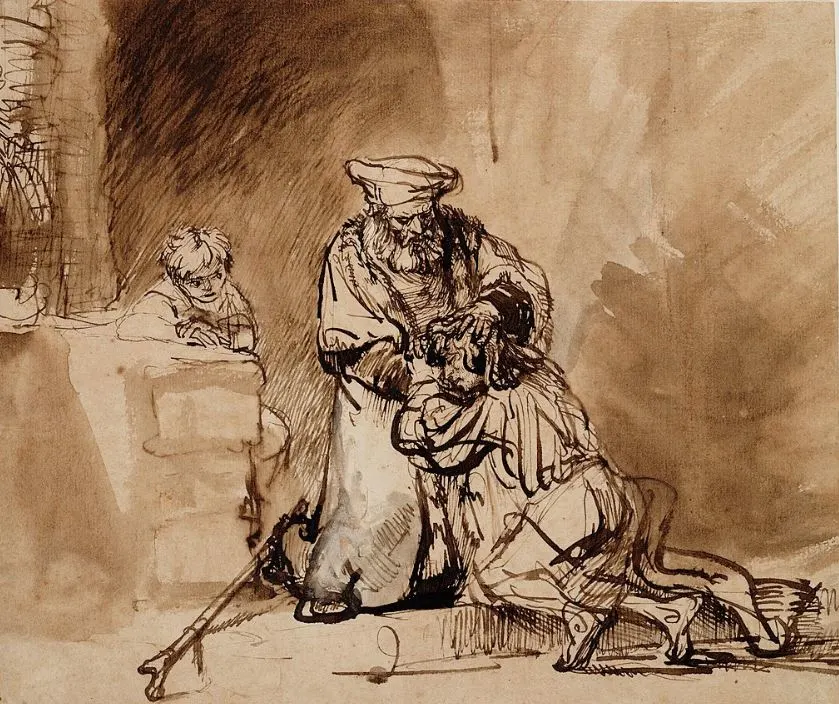
7. How big is The Return of the Prodigal Son by Rembrandt?
The Dutch artist’s versatility wasn’t limited to the mediums he used to produce art but also relates to the dimensions of the paintings in his oeuvre.
The Return of the Prodigal Son by Rembrandt is a large oil on canvas painting that has dimensions of 262 × 205 centimeters (103 × 81 inches).
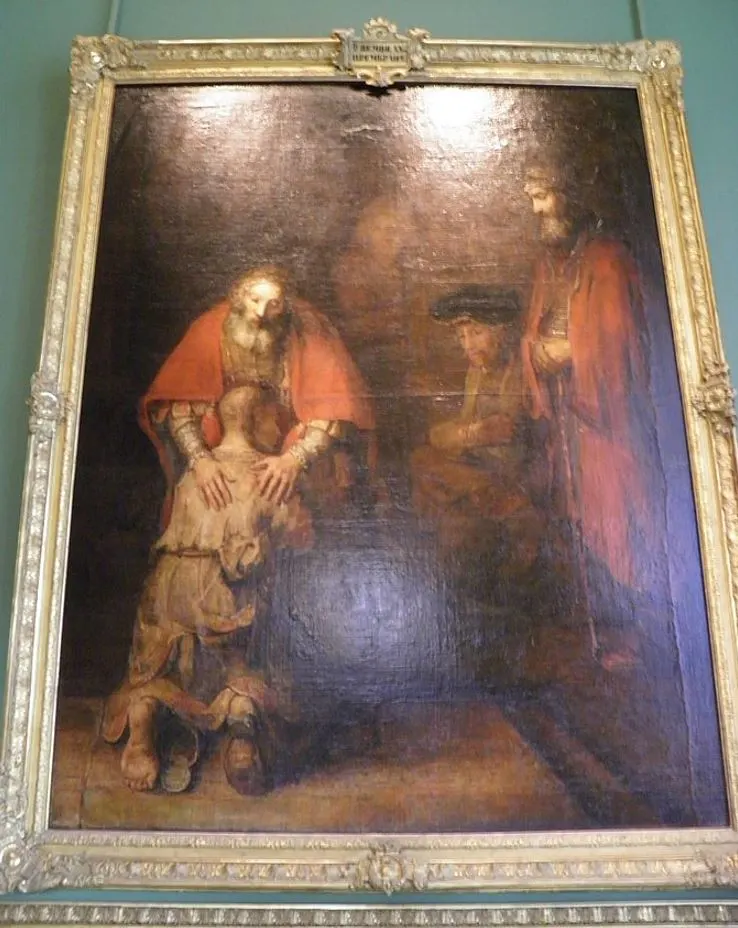
8. Where is Rembrandt’s painting located today?
The painting entered the collection of one of the greatest museums in the world in 1766 after it was acquired by Russian Empress Catherine the Great.
Today, The Return of the Prodigal Son by Rembrandt is still on display in room 234 at the Hermitage Museum in Saint Petersburg, Russia.
